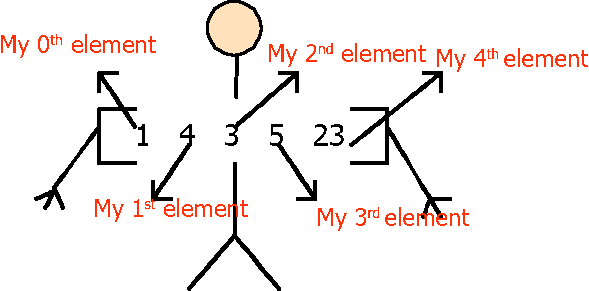It is actually not that difficult to do so.
Ruby array find all indexes.
The second form creates a copy of the array passed as a parameter the array is generated by calling to ary on the parameter.
To access a specific item or element of an array you reference its index or its position in the array.
Using block version in ruby 1 8 7.
Returns a new array.
I often need to get the indices of all the elements that match a given condition.
Testing arrays for nils with enumerable all.
If the last expression in the block evaluates to true the find method returns the value and stops iterating.
In ruby indexes start at zero.
Ruby arrays can hold objects such as string integer fixnum hash symbol even other array objects.
The block usage was added in 1 8 7 so to get the same functionality in an earlier version of ruby you need to utilize the find method.
In the first form if no arguments are sent the new array will be empty.
Arrays are zero based.
Block condition to follow return.
Each element can be referred to by an index.
Since everything in ruby evaluates to true except for false and nil using all.
Find index is a array class method which returns the index of the first array.
Here is a quick example.
If a block is given instead of an argument returns the index of the first object for which the block returns true.
The select method works in a similar way but it constructs a new array containing all of the elements that match.
Array indexing starts at 0 as in c or java.
Index value of the array elements.
By running the following you can achieve that.
If it doesn t find anything after iterating through all of the elements it returns nil.
Hammerhead find executes the block you provide for each element in the array.
A variable can hold only one item at a time.
Arrays can hold objects of any data type.
When a size and an optional default are sent an array is created with size copies of default take notice that all elements will reference the same object default.
When the block is omitted all.
Find l l.
A negative index is assumed relative to the end of the array that is an index of 1 indicates the last element of the array 2 is the next to last element in the array and so on.
Index match if you do some gymnastics you can have it on one line without.
For example an array contains the following contents a 1 1 2 5 6 1 2 8 i want to know the indices of all the ones present in that array.
Uses this implied block.
Without a block on an array is effectively a test to see if all the items in the collection evaluate to true or conversely if there are any false or nil values in the array.
The index of the first element is zero.
Owner myself match index list.

